Menorca: Mallorca’s little brother is the ideal birthday getaway from Rome — or anywhere else
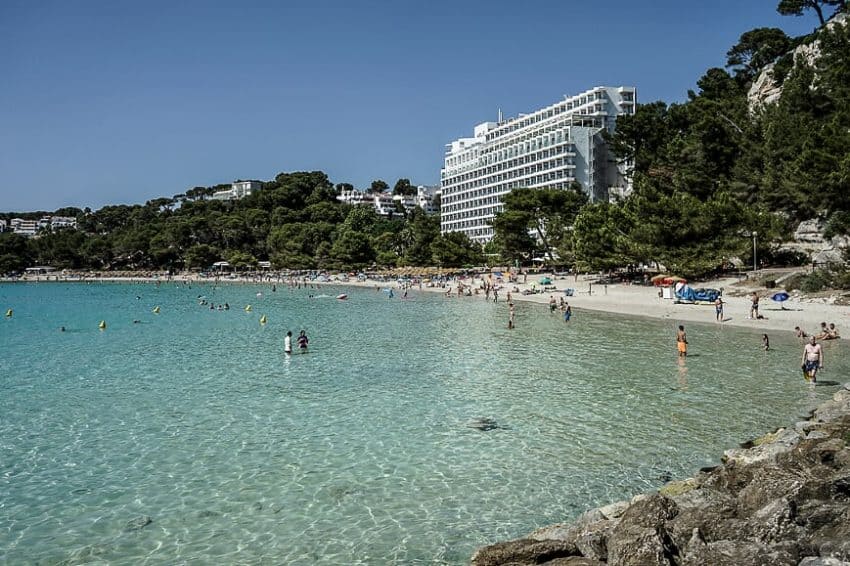
SAN LLUIS, Spain — For the last couple of years Marina and I have tossed around a plan to live half the year on an island and half the year in Rome. If there is a more heavenly existence than that, it’s in a religion I don’t believe in. We focused on the Caribbean. I leaned toward Tobago; she favored Antigua. We discussed doing recon missions every summer to scout new islands.
That plan got scuttled when we saw the airlines fleece Italians going to the Caribbean every August, the most extended vacation time Italians have under their society’s Soviet-era work schedule. Every flight was more than 1,000 euros. We also didn’t want to spend our half year in Rome worrying every hurricane season if our newly acquired island flat would wind up kindling in Venezuela.
Then last winter I asked Marina where she wanted me to take her for her birthday in June. We’ve gone all over. Nice. Berlin. Oslo. Her answer surprised me.
“Minorca,” she said.

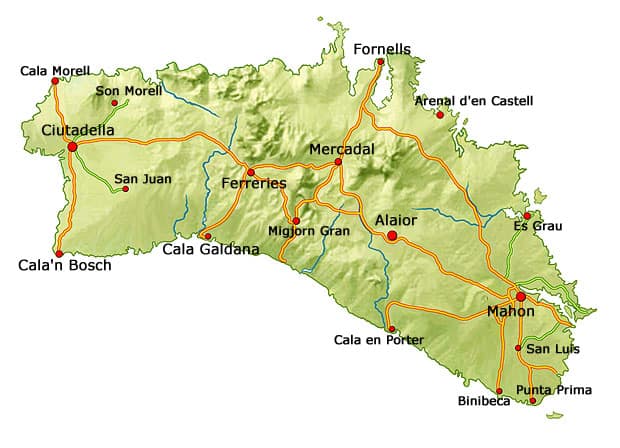
Huh?
Wait, I told her. I’m not going to Mallorca. The place is a tourist trap, lined with crowded beaches and drunk Englishmen. (Does Mallorca really have fish ‘n chips shops on the beach?) I’ve never been there and don’t normally judge anyplace until visiting it first. But Mallorca sounds like tripe: I don’t need to taste it to know I probably won’t like it.
“No,” she said. “MINN-orca.”
As it turns out, Mallorca’s little sister, which had avoided my rapidly shrinking bucket list for my 63 years, is one of the true pearls of the Mediterranean. I hadn’t heard of it because the Menorcans kind of want to keep it that way.
Located 155 miles southeast of Barcelona, Menorca (English spelling) has a population of 94,000 and is about a 10th the size of Mallorca (pop. 895,000) 80 miles to the southwest. Ibiza, one of the other major islands in the Balearic Islands chain and 190 miles south of Menorca, has 133,000 people and, I hear, almost as many clubs.
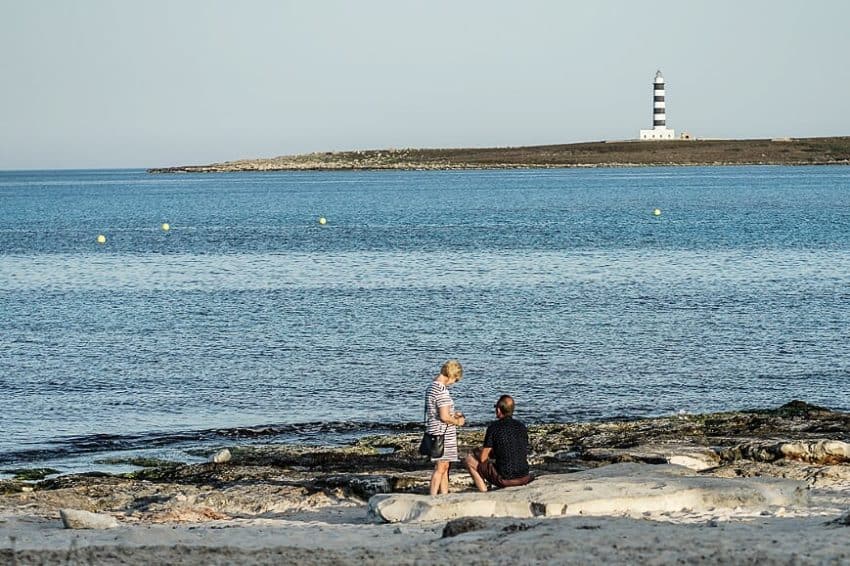
Abhorring clubs and drunks with equal vitriol, I thought Menorca would be as nice a present to me as Marina. Yet when we landed — it’s only a 90-minute flight from Rome — I knew I’d made one big mistake in my homework. We walked by the car rental desks and each one had at least 10 people in line. We went to the taxi stand and the drivers were doing crossword puzzles. We were the only passengers.
You need a car on Menorca. But this isn’t like you need a car in California. With 270 square miles, Menorca is about the size of El Paso. You can drive the lone main road of ME-1 30 miles from one end to the other in about 40 minutes. Small roads snake off ME-1 to various golden sand beaches, lonely coves and quaint villages.
Menorca, a UNESCO biosphere reserve since 1993, has no scenic coast road. Instead, it has Cami de Cavalls (Bridal Path), a 115-mile walking path that circumvents the island broken into 20 handy hiking sections. Visitors don’t dance the night away in Menorca.
The walk the day away.
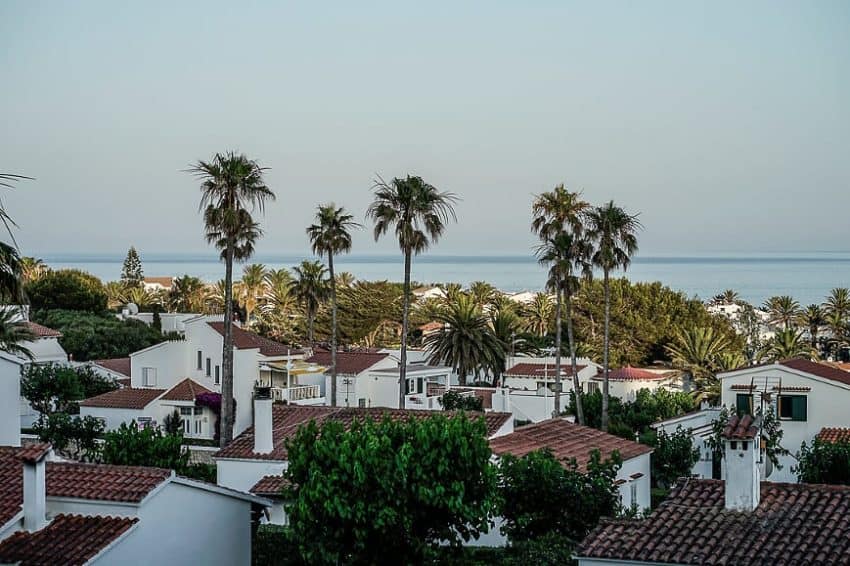
Correcting my brain lock was no problem. Our PortBlue Hotel San Luis, part of the PortBlue Spanish chain, arranged for a car to be delivered the following morning. The 133-euro charge for three days began a trend of surprisingly cheap prices for our entire stay.
The hotel is in S’Algar, an unincorporated coastal resort area in Sant Lluis, so named for King Louis IX when France ran the island in the 18th century. The PortBlue is one of the few buildings on the island more than three stories as Menorca’s government put the kibosh on construction for a recent three-year period.
Yes, this is MEN-orca and not MY-orca.

The PortBlue isn’t on a beach. But we had a huge swimming pool ringed with comfy lounge chairs, a big air-conditioned room with a balcony overlooking the Mediterranean less than a mile away. The breakfast buffet, Marina’s find-or-your-life-is-over travel requirement, had more variety than Denny’s.
The PortBlue is one of those all-inclusive resorts where visitors can eat every meal and drink every drink and only leave if the grounds are invaded by cobras. One hotel source said a British couple has been coming here twice a year for the last 45 years. I wonder if they’ve ever seen a beach.
We did not do the all-inclusive. We only did breakfasts, allowing us to explore the island every day for four days. The beaches were atop our list as the island is ringed with rock-free beaches and the kind of secluded coves you dream about while working your 10th straight day at your computer.
We drove to Ferrerias, in the center of the island, and took a left down a well-paved two-lane road to a huge gravel parking lot just above the sea. We walked down a wide, dirt path through a forest for 15 minutes before it emptied out to Cala Mitjana, recommended by our hotel.
Marina and I gasped. We were astonished by the beauty of this small beach on a narrow cove lined with cliffs for diving beneath a forest of trees. The mix of turquoise and blue-green sea looked like a water color on a museum wall. We were also astonished by the crowd. It was packed, towel-to-towel flesh and not a lounge chair in sight. This is called savage where you pack in your own chair and umbrella.
Being spoiled by Italian beaches, which make up for what they lack in barren simplicity with modern comforts, we stayed only 90 minutes and returned to the car. Getting directions from a woman handing out restaurant fliers, we walked out of the parking lot and descended a steep staircase. In five minutes we were at Cala Santa Galdana.

“Oh, my God!” Marina said in her soft Italian accent.
We had found Spanish Nirvana.
Cala Santa Galdana is a wide, gently curving beach about a kilometer long with fine, white sand and big shady trees scattered along the beach. Each comfy lounge chair had its own thatched umbrella. A couple of restaurants serve fresh fish and beach bars sling cold mugs of underrated Spanish beer.
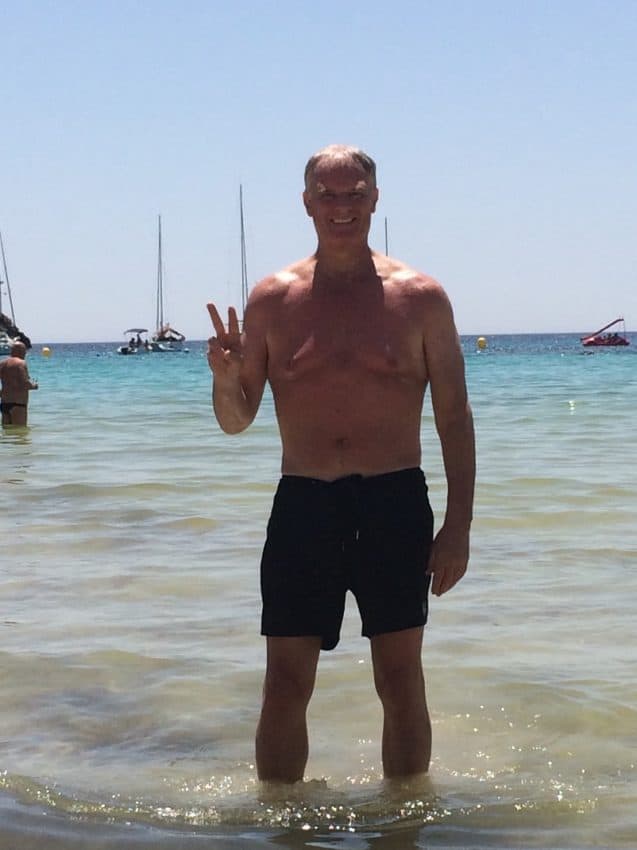
We ignored the plethora of screaming children and fat, pasty English tourists and had a lovely two days on the sea. The Mediterranean was crystal clear and just cool enough to ward off dry, mid-80s temperatures. Between the comfy lounge chairs, a good English novel, the occasional cold beer and Marina under the umbrella, I think I saw a glimpse of our future part-time home.
Galdana isn’t even Menorca’s best beach. Cala en Turqueta, about three miles west as the seagull flies, is so popular a sign in the junction town of Ciutadella indicates if Turqueta’s parking lot is full. It always is by 10 a.m.

The beauty of Menorca is the towns and villages all have their own individual character, fleshed out after a violent history. Formerly part of the Roman Empire, Menorca was also a target of pirates who raided rich Roman establishments. Then came the Vandals, Moors, Catalans, Turks and, presumably, Real Madrid. This is an island that over a 100-year period came under English, French and Spanish rule. The Spanish loved Menorca’s port to launch its naval wars and to begin the slave trade.
Sitting on Sant Lluis’ Carrer de Sant Lluis street, it’s hard to imagine the hardship suffered in a village so quaint. San Lluis is a collection of whitewashed buildings on quiet streets. A 40-foot flour windmill, built in 1792 and operational until 1942, dominates the landscape. An 18th century water well is nearby.
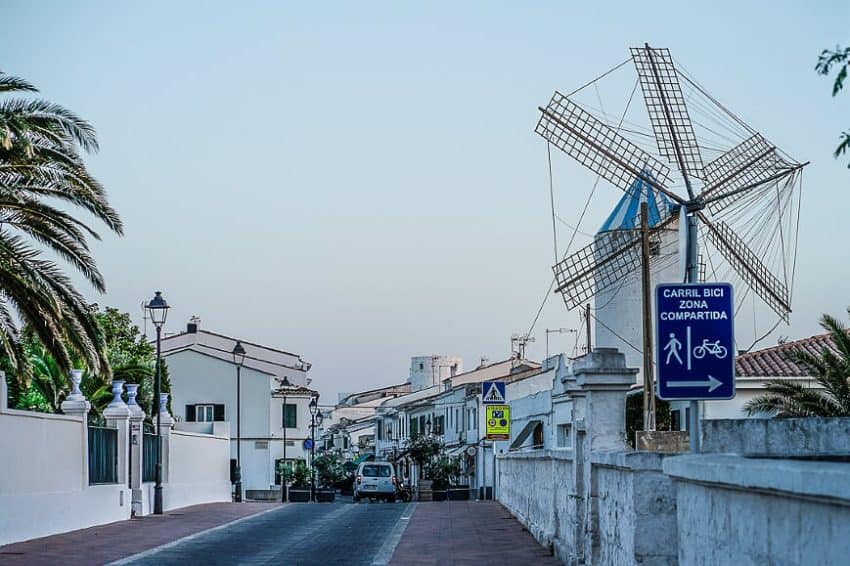
The narrow road is cut off to cars on weekends but on weekdays not many come, either. We took an outdoor seat at Divinum, a wine bar that has five Menorcan wines in its collection from around the world. Owner Rachel Fletcher, a tall, statuesque wine connoisseur, came to Menorca when she was 9 after her father remarried and fell in love with the island on his honeymoon. He went back to England and brought the kids.
Forty years later, she’s still here. Over a glass of local Binifadet red wine with soft Spanish jazz playing in the background, I asked her what Menorca was like back when she was a kid.
“There was nothing,” she said. “It was wonderful. When we came over, there were four English families. We were one of them. That’s it. The port, the harbor, was all brick. If you moved over too much you’d be in the water. And it was real narrow.”
I told her it seems like Menorca has kept its culture. The island government’s restrictions on building have worked.
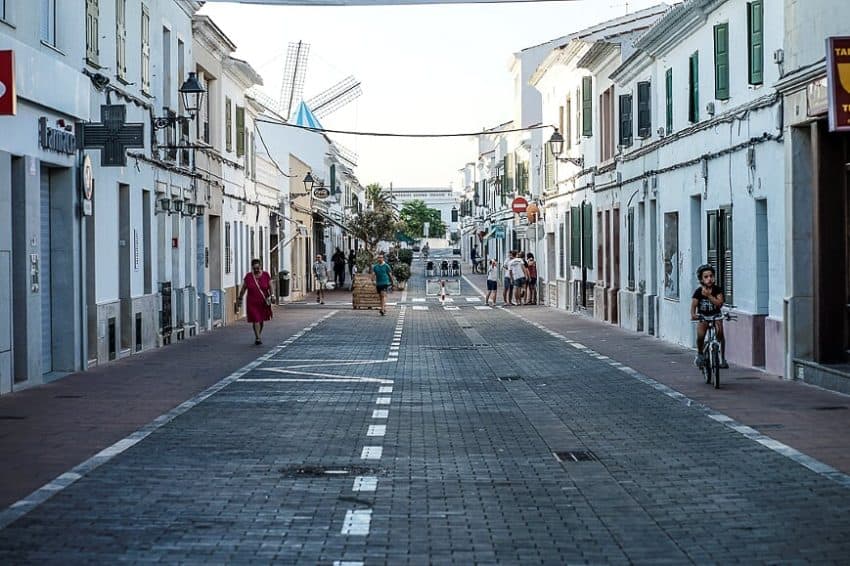
“Yes, Ibiza and Palma (Mallorca’s capital) have grown a lot more and they’ve got more hotels,” she said. “Here we’ve tried to maintain or keep the architecture. You don’t see huge hotels everywhere.”
Some in Menorca claim they’ve kept growth down too much. Tourism this year is down 30 percent. They blame excessive airport taxes that have made flights here more expensive than to Mallorca. A sample flight from Rome to Menorca on July 26 and returning a week later was 244 euros this week. To Mallorca on the same dates is 172 and with many more times from which to choose.
That’s fine with me. We were able to stroll the lovely city of Ciutadella, Menorca’s largest town with only 29,000 people, without ever running into a tour group in headphones. On the far western tip of Menorca, Ciutadella has quiet streets lined with maple trees, plazas filled with outdoor cafes and people strolling in the summer sun.
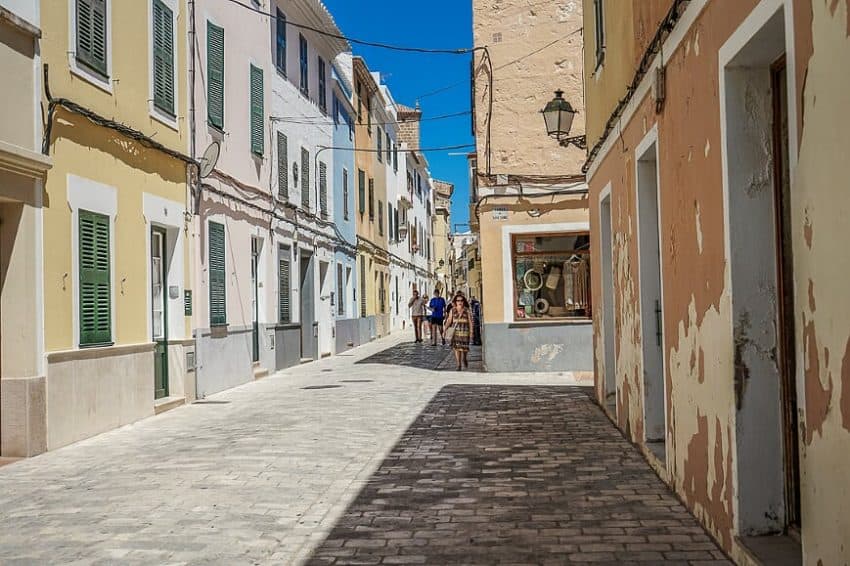
We took a seat in a quiet courtyard with two facing outdoor cafes. I ordered an ice-cold Estrella from inside where old Spanish women played video poker while young women in stylish shorts walked their dogs past our table. People of all ages biked down bike lanes with palm trees providing shade in the median.
We walked down Parroquia Sant Francesc d’Assis, an alley lined with small houses of beige and yellow and pink and blue. Pots with blooming flowers sat on window sills. And the town was spotless. In fact, all of Menorca was clean. We nary saw a cigarette butt. Coming from Rome, the filthiest capital in Europe, I almost felt as if I should take off my shoes.
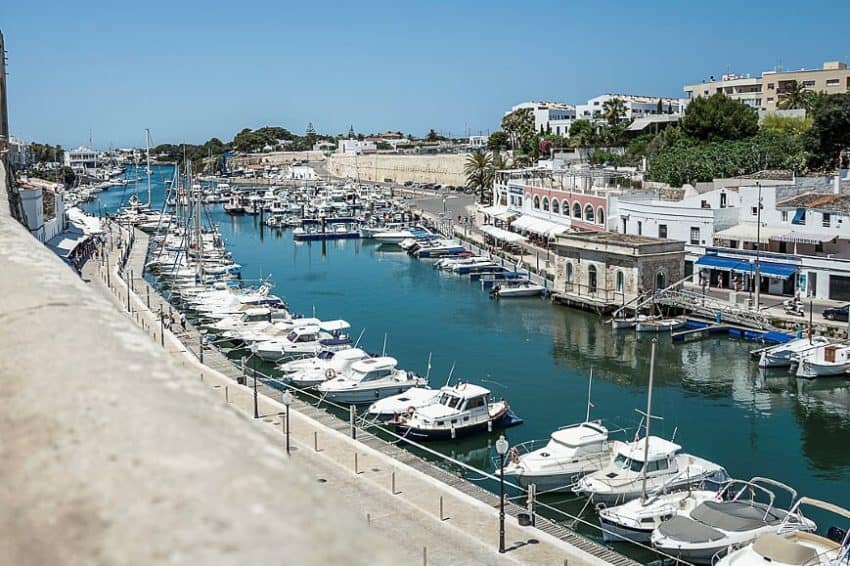
“They are very recycling friendly,” said Vanesa Rodriguez, our hotel manager. “Everybody on the island is very responsible with the nature.”
At the end of the alley we saw Ciutadella’s beautiful harbor, a narrow inlet lined with pleasure craft bobbing up and down on cobalt blue water.
It made us want to jump in. So we did. I got us on a 3 ½-hour catamaran cruise out of Fornells, the major port town in the north. We joined about eight others from Sweden and Germany on a 40-foot boat under cloudless skies and pleasant wind.

Few expensive pleasures are better than a sailboat ride on a perfect day. Spray over the bouncing bow cooled us off as we sunbathed on deck. When I gathered enough energy, I raised my head 12 inches and saw the high cliffs showing the geological marks dating back to the Jurassic Period. Due to the dryness, Menorca isn’t beautiful from sea. We passed barren land mass as we skirted around the west end of the island.
Snorkeling revealed remarkable visibility of about 60 feet. That’s South Pacific level for Europe where I’ve always avoided scuba diving despite being certified for 36 years. A school of a local seabream called an oblada circled around my fins before being served up in local restaurants later that week.
I came
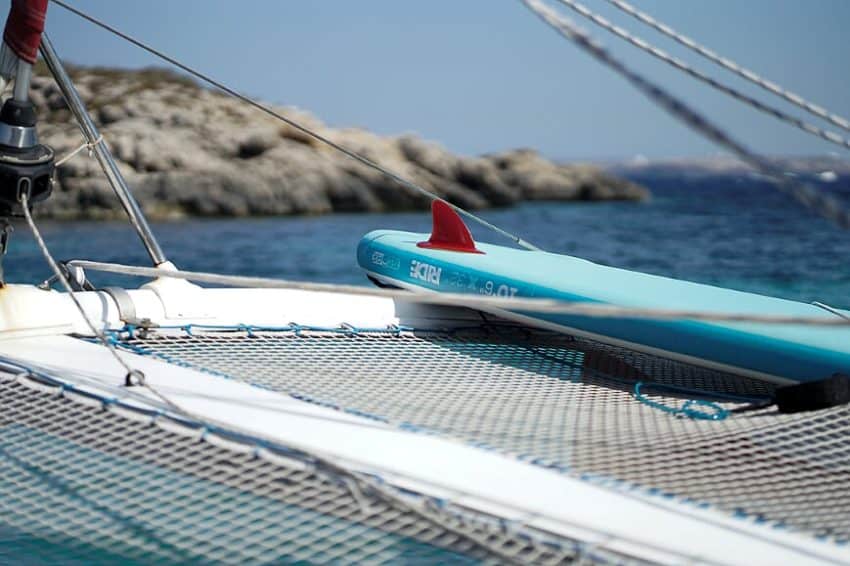
aboard and the captain greeted me with a pomada, an addictingly sweet local drink made from Menorca gin and lemon soda. With a little ice, it is what a Spritz is to Italy or a martini to Manhattan.
Besides the beaches, the tranquility and the villages, our other draw to Menorca was food. While Italy has the best food in the world (Shut up, you French. Tartare sucks.), Spain is certainly in the top 10. The fresh seafood along its 3,000-mile coastline, combined with its national dish of paella, its tapas and variety of grilled meats make dining out anywhere in Spain a gastro kaleidoscope.
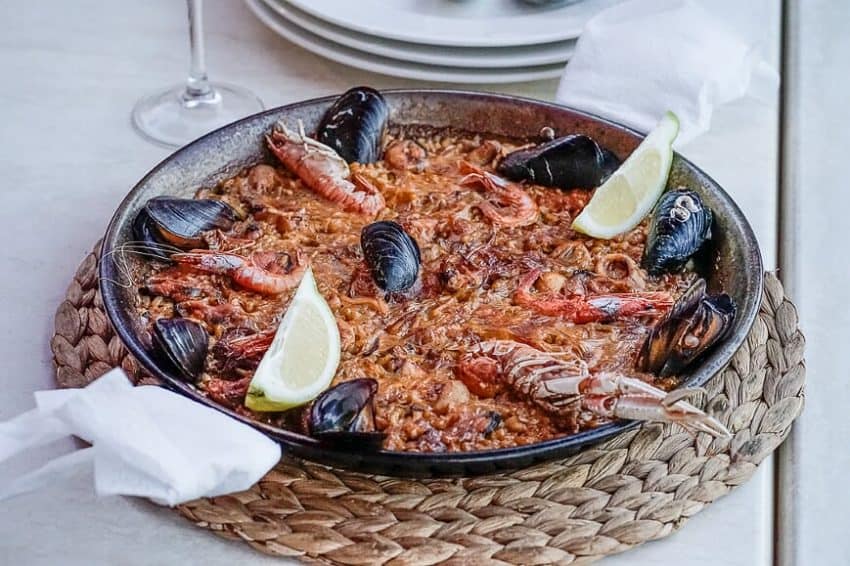
We started out with seafood paella, Spain’s big sloppy skillet filled with brown rice, clams, mussels and octopus all swimming in a thick sauce. We found it La Oveja Negra, part of the string of casual, open-air restaurants lining Punta Prima, the beach just south of S’Algar. La Oveja Negra (The Black Sheep) has a sign listing all its different paellas, ranging from lobster to chicken and artichokes. It’s one of the heartiest dishes in Europe and the perfect fuel for a walk along the quiet beach in the moonlight.
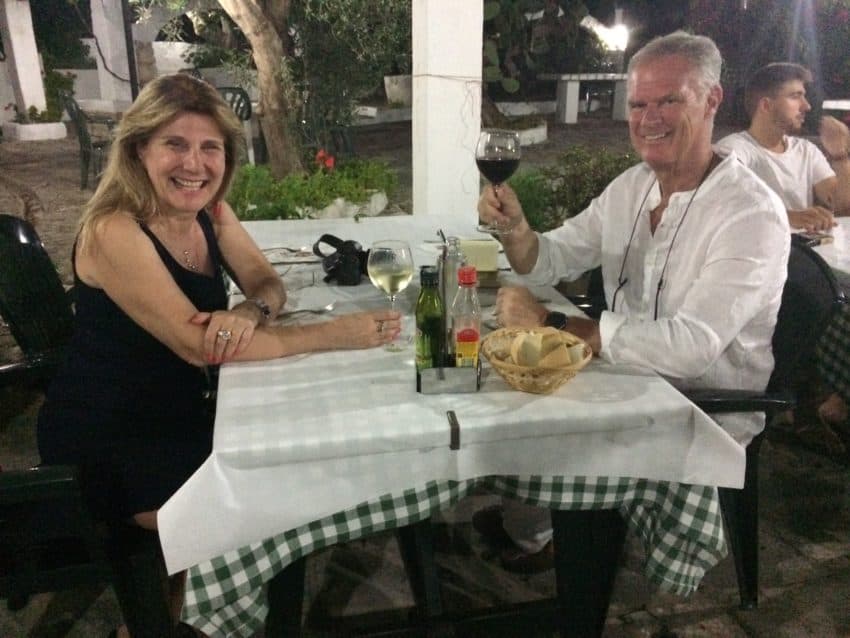
We ventured further afield to Meson El Gallo, a long one-story converted house in a garden covered with shady tree branches along the road to Cala Santa Galdana. A giant cactus stood in the parking lot, giving it the feel of a hacienda in rural Arizona. The waiters all wore jeans and T-shirts. If it was any more casual it would be a beach bar. But I had a terrific, lean steak in cheese sauce and a glass of Rioja, Spain’s internationally famous red wine that can’t match Italy’s gems but on a Spanish island in the middle of summer no other world wine is a better match.
But if Spain doesn’t have a law requiring every visitor to try tapas, it should. Tapas are Spanish hors d’oeuvres. These are not chips and dip or celery sticks. These are handcrafted snacks, usually hot, using everything from fresh fish to spicy sausage.

We returned to Carere Sant Lluis and took an outdoor seat at S’Olivera, next door to Divinum. From an entire page of tapas, we ordered little plates of croquetas de endivia (a breadcrumbed green vegetable native to Menorca), tiras de pollo (chicken fingers with salsa curry and mango sauce), camembert con jalea de moras (goat cheese with blueberry jam) and good ol’ fashioned fish ‘n chips. It was just the right amount of food and with a glass of wine each, the total bill was all of 33 euros.
About 80 percent of Menorca’s businesses close from about Oct. 1 to April 30. Still, that leaves about five months of pure island bliss, away from Rome’s heat during the tourist season and its growing garbage all year round.
Living in Menorca is a long way off but as this long weekend proved, it’s not just the destination. It’s the journey that’s the most fun.


July 5, 2019 @ 2:29 pm
As always, I admire your life with Marina and long to be as happy as the two of you. Your experiences are exhilarting to read and feel. God bless you both!!! And congrats again on the New York Times feature piece!
July 5, 2019 @ 2:56 pm
Exceptional piece, as always, John.
July 6, 2019 @ 12:41 am
We moved to Monteverdi, Rome at the first of April this year and have been looking for a place to beat the heat that will certainly be here through August or September. Menorca looks great, thanks for the post.
July 6, 2019 @ 5:59 pm
It’s on my list now! It sounds just like the kind of place I would love, thank you for an informative review.
July 9, 2019 @ 3:24 pm
Wonderful piece, thanks for sharing it with us. Love your mix of humor and close observation. And your awareness of the financial realities of travel. We can’t all travel like Saudi sheiks, but you give us great ideas to build a trip (and a dream) upon. Best wishes.